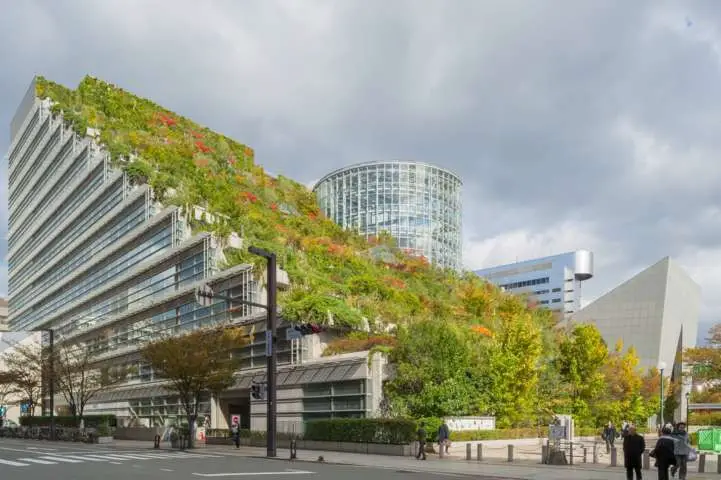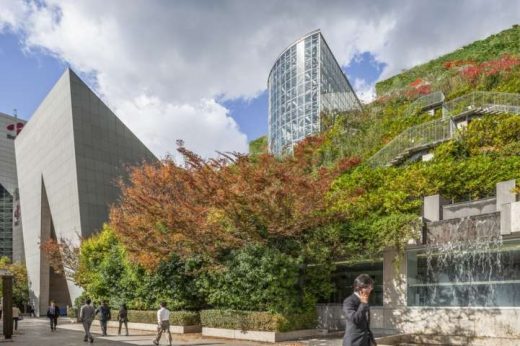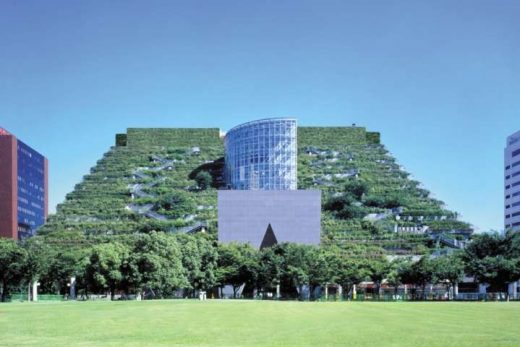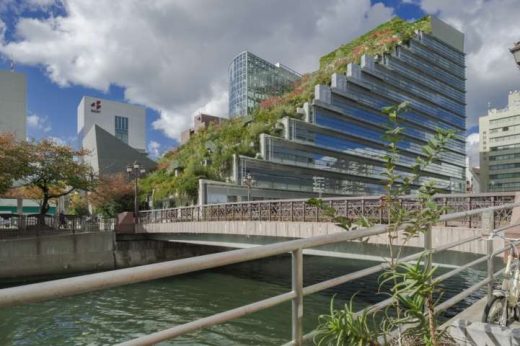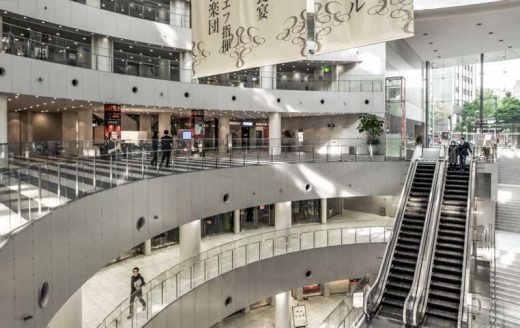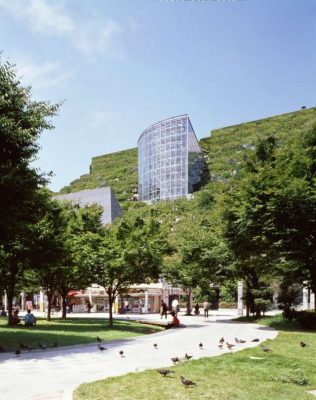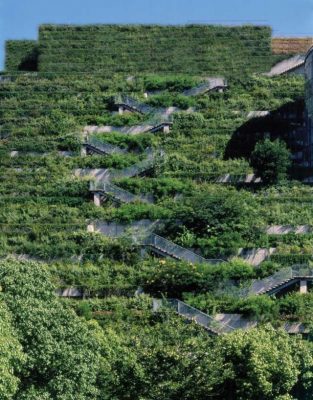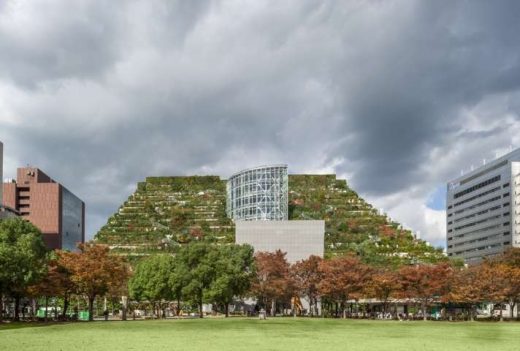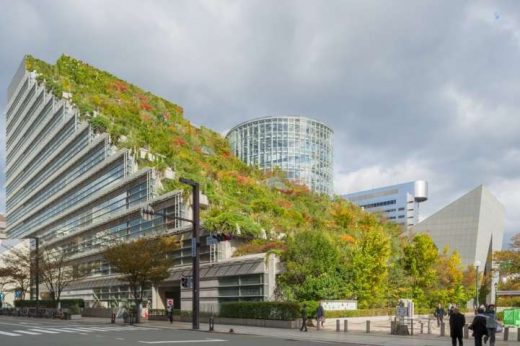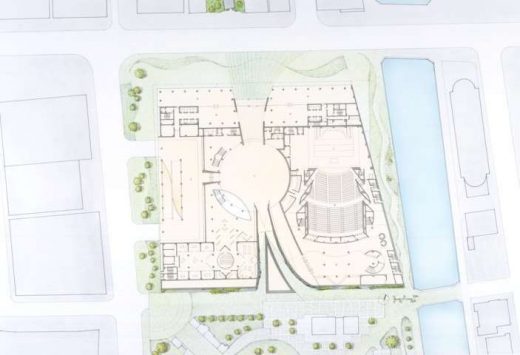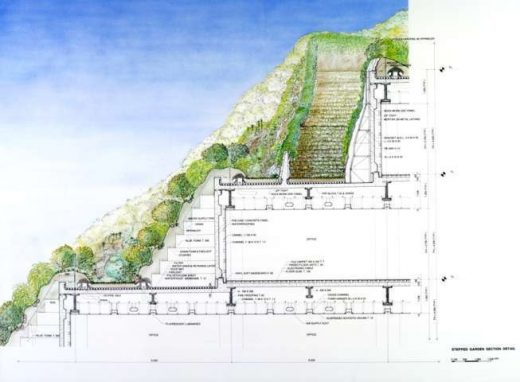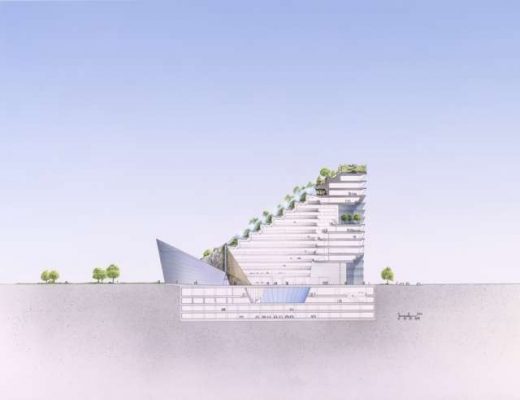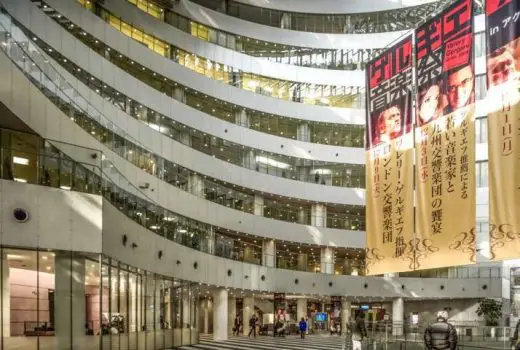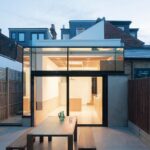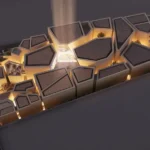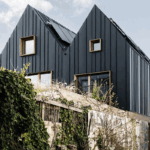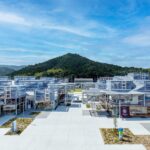ACROS Centre Fukuoka Building, Modern Japanese Architecture Design, Photos
ACROS Centre in Fukuoka
4 August 2020
ACROS centre Fukuoka by Emilio Ambasz
Design: Emilio Ambasz Architect
Location: Chuo Ward, Fukuoka City, Kyushu Island, Japan
Nature and architecture:
Emilio Ambasz and Fukuoka’s ACROS centre 25 year later
Fukuoka’s ACROS centre in Japan designed by Argentinian architect Emilio Ambasz has reached its 25th anniversary.
The 100,000-sqm building in the city centre has given the area a new life, being the first big design enterprise that dialogues with nature and becoming a model of inspiration around the world.
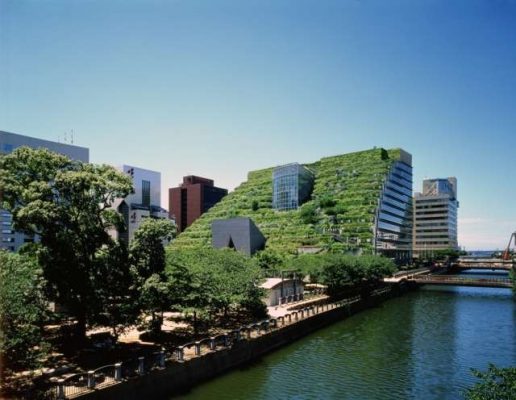
images courtesy of Emilio Ambasz & associates / ambasz.com
The ACROS centre building designed by Emilio Ambasz, whose pictures keep traveling the world, was born out of an innovative research and vision that started forty years ago. This intuition has deeply influenced the world of architecture and it has brought inspiration to designs that mix nature and architecture.
The project has been awarded the American Institute of Architects’ Business week/Architectural Record Award and the first prize from the Japanese Institute of Architecture. It is founded on the concept that nature has to cover the greyness of buildings, and the aim of the architect has been that of giving back to the community the surface on which the building had to be constructed.
There are 14 gardens on the rooftop of the building, featuring pools and water features, and there is also a panoramic view that overlooks the harbour and the surroundings. The area is open to the public. Emilio Ambasz commented that “the building is at the heart of a city that featured a 2 hectares plaza, and now it still has a 2 hectares plaza.”
The work has influenced some of the most renowned names in contemporary architecture, from Renzo Piano to Jean Nouvel, to Tadao Ando. The latter has commented: “I believe there is no other work in which nature dominates architecture with such power and charm […] Emilio Ambasz has taught us to imagine a dimension in which nature and architecture become inseparable, in a kingdom in which there is both God’s creation and Man’s creation.”
According to Ambasz, ACROS – Asian CrossRoad Over the Sea – stands as a demonstration that “the dominant concept according to which ‘cities are for buildings and suburbs are for parks’ is wrong. It is too easy to relegate nature in the suburbs and leave greyness in the city. It is an idea that completely lacks imagination.” In urban centres with a high density of population the interests of developers, the need of new buildings and the need of open public green areas can be intertwined.
ACROS has indeed made a step forward by allowing a huge urban building to coexist with a public open space.
The symbiosis of these two elements is also certified by a research conducted by Takenaka Corporation, Kyushu University and the Nippon Institute of Technology according to which the building contributes to the reduction of the heat island that surrounds the area, to the reduction of energy consumption and of CO2 emission, and it also allows a 15-degrees difference between the interior and exterior of this magical pyramid.
The interior of the building extends on a surface of 97 thousand square meters and it includes an exhibition area, a museum, a 2000-seat theatre, congress rooms, government- and private offices, a tourist information centre, shops and 4 underground levels. It is thus a meeting point both for the citizens of Fukuoka and for the visitors traveling in Japan.
“In order to build something that respects the environment one needs technology” says Ambasz, “but in order to do real architecture one also needs art. We never have to think that the technological systems of a building that respects the environment and saves energy are separate from to the emotions generated by a work of art. If there is a drive in my ideas, it derives from the fact that I believe architecture to be not only pragmatic, but also emotional.” The core idea of Ambasz was that of designing buildings that could “sing with a strong voice by keeping their mouth shut.”
Emilio Ambasz is a prophet, a poet, he has been a pioneer of green architecture since the Seventies, and he still is a reference for his innovative thoughts that aim at connecting nature and buildings: “Each building constitutes an intrusion into the vegetation, it challenges nature: we have to conceive an architecture that rises above the intrusion, that stands as an act of reconciliation between nature and buildings. We need to design buildings that are so intermingled with the surrounding landscape that one gets the idea that they are just the same thing.”
Ambasz’s message brings together technology and primitivism (Terence Riley, MoMa), he creates “sophisticated heavens on earth” (A. Mendini), and still continues his poetical research in which natural and artificial fuse together: “it is an ethical obligation to demonstrate that another future is possible. We need to affirm another model of life in order to change the route of the present.”
At the inauguration of the ACROS centre in Fukuoka 25 years ago, 76 varieties and 37,000 plants featured on the building, which now have grown and developed to 120 varieties and 50,000 plants.
Emilio Ambasz is the father of the most pioneering of green buildings, and he affirms that “seeing others using vegetation in their projects makes me realise that my mission is starting to show signs of development. Hearing some of them affirming the paternity of such ideas makes me feel like a mythologic character, even though I know that this is only a foreseen Freudian destiny.”
MoMA Emilio Ambasz Research Institute
ACROS Centre Fukuoka – Emilio Ambasz Building images / information received 040820
Address: 1 Chome-1-1 Tenjin, Chuo Ward, Fukuoka, 810-0001, Japan
Phone: +81 92-725-9111
Location: Fukuoka City, Japan, East Asia
Fukuoka Building Designs
Contemporary Fukuoka Architecture Selection
A2-house Residence, Fukuoka City
Design: Masahiko Sato Architects
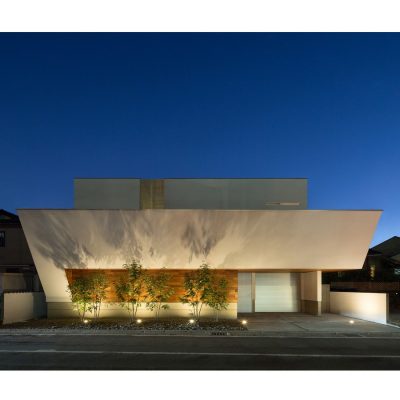
photograph : Toshihisa Ishii
Fukuoka City Property
Nexus Kashi II
Design: Martha Schwartz
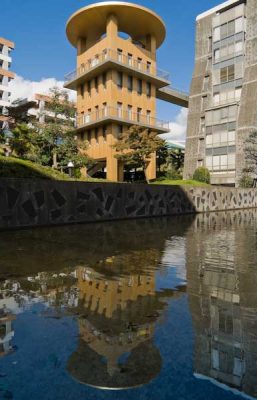
photo © Wade Zimmerman
Nexus Housing Fukuoka
Japan Architecture Designs
Contemporary Japan Architectural Selection
Japanese Architecture Design – chronological list
I house in Sasebo City, Nagasaki Prefecture, Kyusyu, Japan
Design: Masahiko Sato, Architect, of Architect Show Co., Ltd.
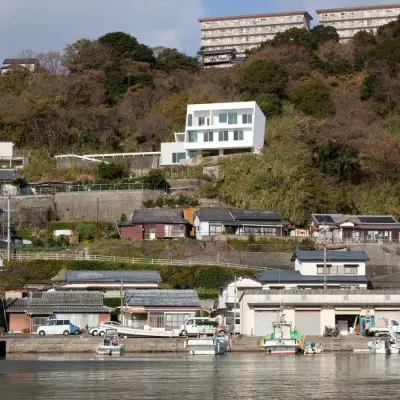
photo : Toshihisa Ishii
House in Sasebo City
N8-house [house of ⅢBox], Omura city, Nagasaki Prefecture, Kyusyu, Japan
Design: Masahiko Sato, Architect, of Architect Show Co., Ltd.
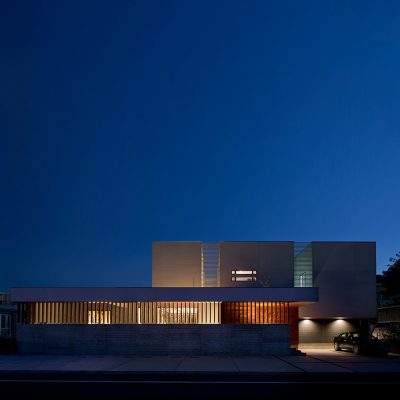
photo : Toshihisa Ishii
Residence in Omura city
Comments / photos for the ACROS Centre Fukuoka: Emilio Ambasz page welcome

